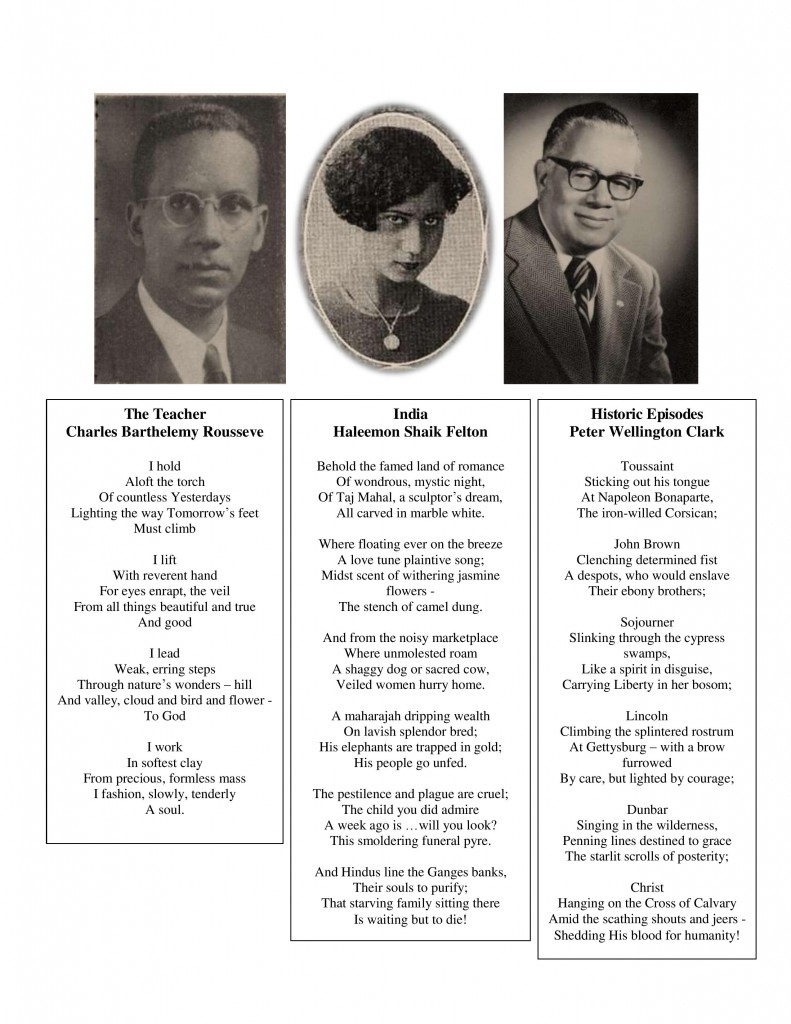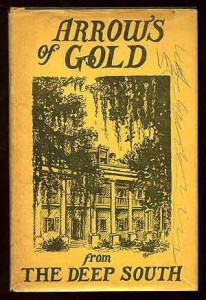The editor of the anthology of poems entitled Arrows of Gold remarked in the introduction to the volume that one must be watchful for golden arrows for “so swiftly do they fly and disappear from view.” Though referencing the poems contained therein, the editor might well have described the short but interesting early history of the Xavier University Press. Established at Xavier University of Louisiana in the midst of the Great Depression, the University Press published four works between 1936 and 1943. It met its demise due to the paper shortages during World War II, only to be revived nearly thirty years later.
The four works which it published were all “useful” ones, much like the institution which gave birth to the press, the aim of racial uplift and mental and spiritual growth was evident. Helping to fill the dearth of published material on the black history of Louisiana, The Negro in Louisiana: Aspects of His History and His Literature (1937), was the first work to be published. This work was the culmination of research conducted by Xavier alumnus, Charles Barthélémy Rousseve (M.A. ’36), for his master’s thesis. John Patrick Corcoran, a professor of Education at Xavier, published a collection of twenty-five monographs with compiled information on occupational opportunities available to Negroes under the title Occupational Opportunities Monographs (1938). The subject of this post, Arrows of Gold [from the Deep South]: An Anthology of Catholic Verse from “America’s First Catholic College of Colored Youth” was published in 1941. The last work to be published was a hymnal entitled Hymns for the Use of Xavier University of Louisiana (1943).
Arrows of Gold was published in 1941, being the brainchild of Peter Wellington “Champ” Clark (B.A. ’38, M.A. ’42), an educator and journalist, who himself frequently penned poems during and after his time as a student at Xavier. Many of the poems contained in the anthology had first been printed in The Xavier Herald, of which Clark was the first editor; others had appeared in religious publications such as The Franciscan Herald and The Interracial Review, or in The Crisis, which was and is the organ of the N.A.A.C.P.
The volume includes the work of sixteen Xavierites along with two poems by the Reverend Edward F. Murphy, S.S.J., Ph.D., who chaired the Theology and Philosophy departments at Xavier for many years and authored the well-known novel The Scarlet Lilly. There is one work “My Dearest Friend,” attributed simply to “S.M.B.” These initials quite likely belonged to one of the Sisters on the faculty, who almost always were named “Sister Mary …” Finally, there are three poems “To Her I Love,” by Camille Thierry, “Napoleon’s Return,” by Victor Séjour and “Vision,” by Joanni Questi, all translated from French by Charles Rousseve. These three last named poets were all colored Creoles of antebellum New Orleans who contributed to Les Cenelles (1845), the first anthology of verse published by blacks in the country.
The sixteen Xavierites who contributed to the work were:
Felix Barré (2)
Estelle Banks Blanc
Louis Carter
Peter W. Clark (23)
James Despinasse
Marie Donatto
Irma Henry
Lily Anne LaSalle (Shaik) (6)
Vincent Mott
Edward Peek (2)
Agatha V. Powell
Maurice E. Prevost (2)
Alma Priestley (Taylor) (9)
Charles B. Rousseve (4)
Haleemon Shaik (Felton) (3)
Noyemon Shaik (Tio) (2)
(Numbers in parentheses indicate the number of works contributed.)
The entire volume, which consists of sixty-seven poems, was dedicated to Saint Katherine Drexel and to the Sisters of the Blessed Sacrament, who that year celebrated their fiftieth anniversary of their founding.
Many of the contributors continued their literary pursuits throughout their lifetimes and several are profiled in Negro Catholic Writers 1900-1943: A Bio-Bibliography (Detroit: W. Romig & Co., 1945) compiled by Sister Mary Anthony Scally.
Given below are photographs of a few of the major contributors to the work and samples of their poetry.

Jari C. Honora




Fantastic information you all have brought forth from “hidden in plain view,” of our history. I am so delighted our stories are being told as only we can tell. Ms. Powell was teacher at Joseph Clark when I was a student. Mrs. Blanc married Clarence Blanc, Sr. and lived on St. Bernard Avenue. When we meet the elders, we never know about their golden years (not old age) of activity as change agents. They left their path for us to follow and I applaud each of you in this project to continue and I applaud the Lions who went before us, and may we leave a path with a visible trail so other generations do not become lost. Your post are so valuable.
Ditto! These vignettes of Black History told through the eyes of the people who lived it as resurected from archives is an inspriation and source of pride. I lways look forward to your articles. It’s an incredible journey to say the least — thank you!
Peter ” Champ” Clark was my uncle. Four of his poems appear in my book The Reverend Peter W. Clark: Sweet Preacher and Steadfast Reformer. The book tells the story of the Rev. Peter W. Clark who developed Methodist Churches in black communities across Louisiana and also loved to write. Currently, we are trying to get “Champ” in the Louisiana Sports Hall of Fame for his pioneer work in sports broadcasting.
Mrs. Estelle Blanc taught me at St. Mary’s Academy in 1964. She was an excellent English teacher. I don’t remember if she mentioned that she wrote poems while she was a student at Xavier. However, I am not surprised that she was one of the poets who contributed to “arrows of Gold”.
Mr. Maurice Prevost was my uncle. I was priviledged to have
spent much time in my life talking with him.. He almost lived
100 yrs.